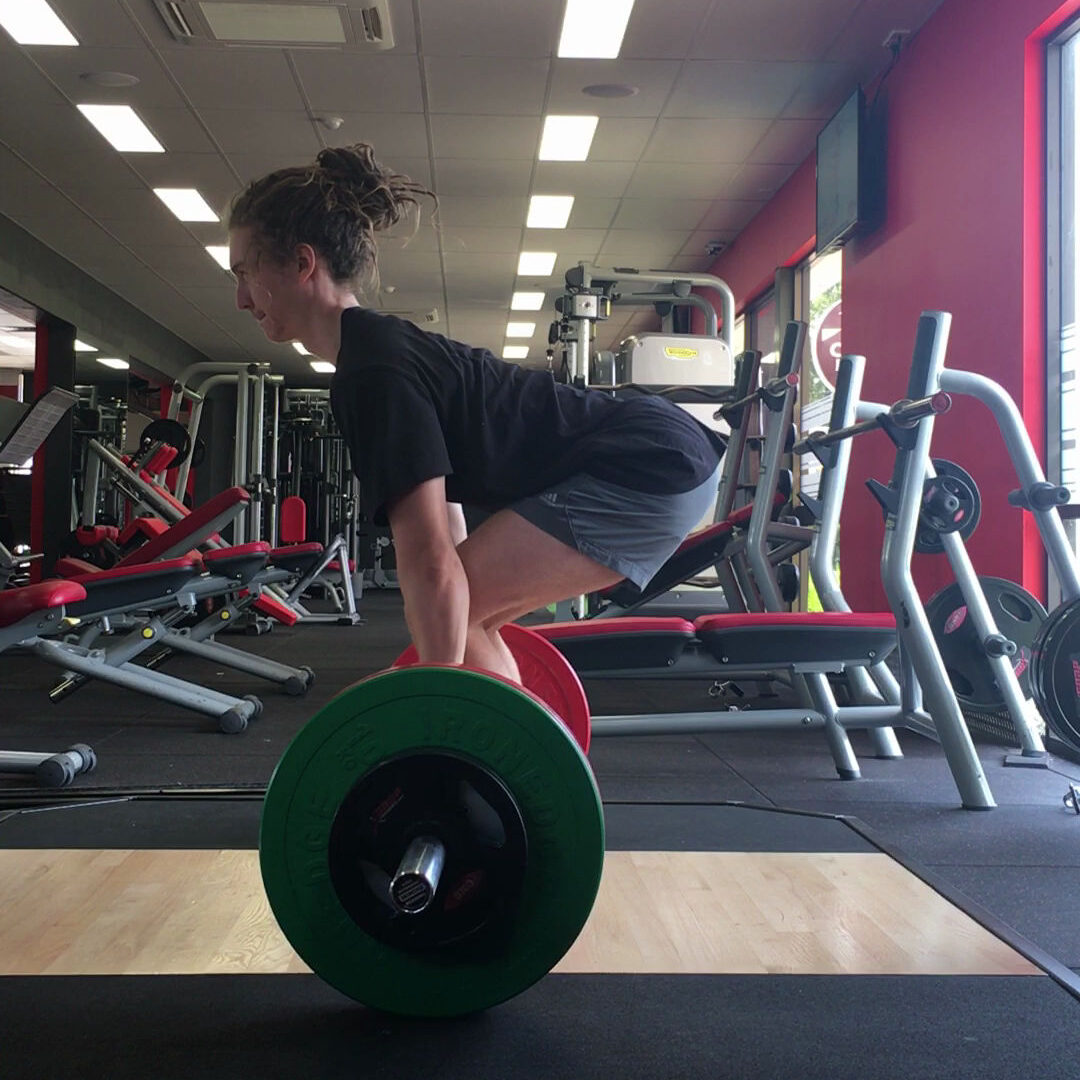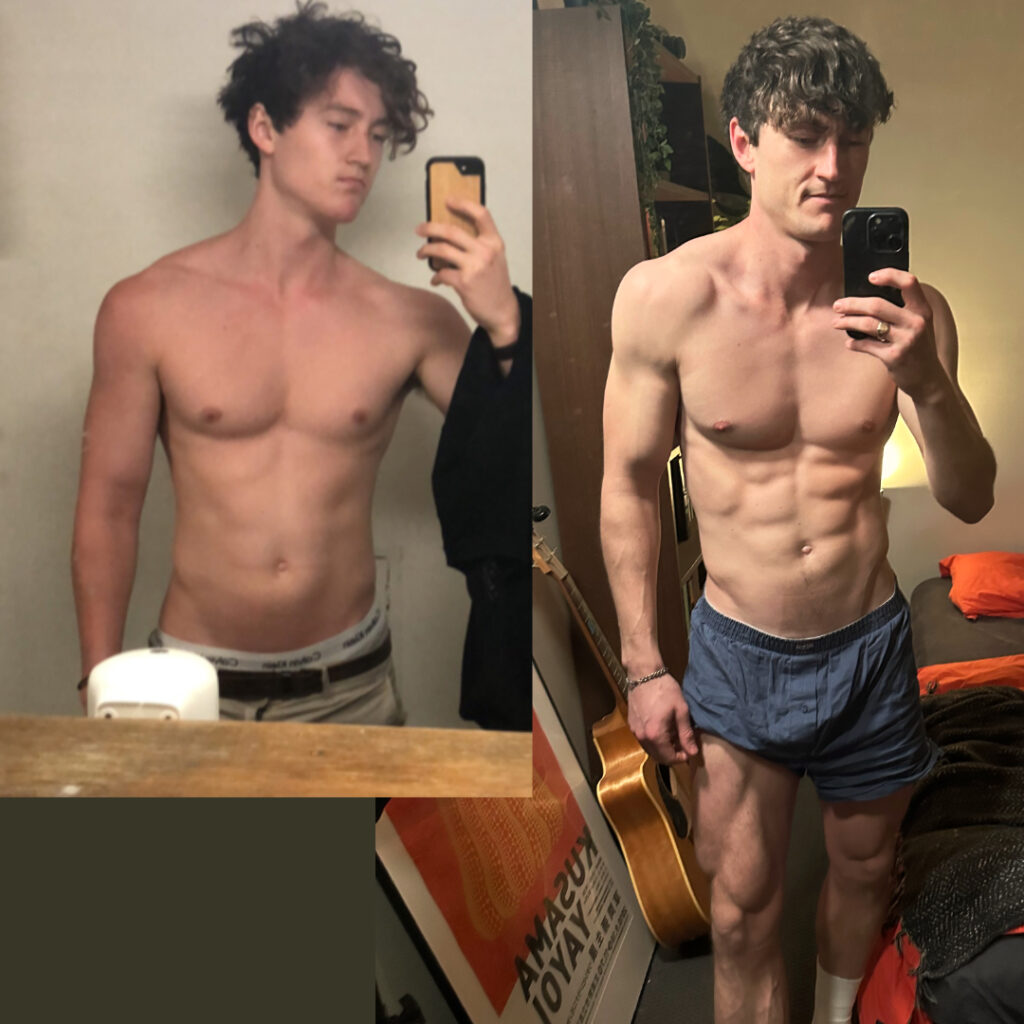All I wanted when I first started getting into fitness was to look decent, build a bit of muscle, get some definition, and have an overall athletic physique. In pursuing that, I spent a good five years training for at least three to five hours a week. I put in the hard yards consistently. I sacrificed time on other things to spend training. My program was comprehensive, it was well designed, and I was unwaveringly consistent in executing it.

I got okay results, but at the same time, for a good 80% of my training, it felt like I was kind of spinning my wheels, exerting a lot of time and effort in a constant fight to stay in the same place. I’d look around me at people with way better physiques who knew nothing about exercise science yet had way better bodies and way more strength than me. Then, I looked at all the training I was doing and the results that I was getting, and something just seemed inefficient.
In my ongoing quest to develop the most effective training routine possible, over the past five years, I’ve cut back my entire week’s training to take less than 40 minutes. Here is my physique change in that time:

I’m now finally reaching my lifetime strength goals, and I’m putting in what feels like almost no effort to continually watch my body get stronger, leaner, and more impressive. Bear in mind that making progress at this more advanced level is actually harder than at the beginner level. This hasn’t just worked because I was already fit; it’s worked in spite of the fact that I was already an intermediate-level trainee with tougher progress to make. That’s why all my beginner-level students transform so quickly in the early stages of progress compared to me, with five years of training experience behind me. You apply a potent method to a beginner body that’s already primed for growth, and you get some pretty nuts transformations.
I’m going to show you right now exactly how this method works and why, even though this is my job and I’m more obsessed than anyone with getting results, I will never go back to training for more than 40 minutes a week or recommend that anyone else do so if they’re doing things right.
Time Spent Training Does Not Equal Results
The fundamental error that I have made in the past, and that so many of us make when getting into strength training and fitness, is thinking that there is a correlation between our time spent training and the result we get. This is completely backwards. The error here is thinking that the limiting factor on our growth is how much we can train, but this is absolutely not the case.
The limiting factor on your rate of progress with your physique, strength, and muscle gain is not the amount of time you spend in the gym. If it were, we could all just train non-stop for an entire week and be jacked bodybuilders, which is simply not the case.
The Limiting Factor For Progress: Recovery
Okay, so what is the limiting factor? It’s your body’s own ability to recover and grow.
How can we speed that up? Well, we can’t. Once we’ve stimulated growth to happen, we can simply give our body enough protein, enough calories, and enough rest and sleep, and then we wait.
Stimulating Muscle Growth
Alright, so how do we stimulate growth? How do we make sure we send that signal so that, in our downtime while we’re resting and sleeping and eating, we ensure our bodies are growing and changing as fast as possible? The answer to that, quite simply, is by trying to be stronger. It’s max effort exertion of our current levels of strength. It’s the moments when we are truly trying as hard as physically possible to be stronger than we currently are. That’s what sends the signal to your body that it is not strong enough to meet the current demands, and to keep you alive in the future, it needs to grow and get stronger by building muscle tissue.
Traditional Strength Training Works, But…
The way we go about sending this signal is through strength training. Traditionally, that’s done in the weights room, lifting heavy things. The only issue with this traditional approach is that it’s really an inefficient way of sending the signal. It absolutely works, but it comes with a lot of waste. Lifting a constant, fixed amount of weight—only one tiny portion of each set that we do actually reaches that max effort stimulation, if at all. Think about the last time you did a set of bench press where you’re pushing a barbell with a set amount of weight. What percentage of the time you spent on that set was spent at all-out failure, using every single bit of strength in your body just to move the bar? It was likely very little, if not none. Even if you were doing a one-rep max that was absolutely challenging, only a small portion of that rep would you have actually reached failure and risked not getting the bar up. On normal sets, anything else would be downright unsafe unless you had a spotter who was happy to do half the lifting for you. Because of this, it takes hours to stack up enough of that proper growth-stimulating work to satisfy us for the week. At the same time, not only do we chew up our most valuable resource, which is our time, but we also expose our connective tissue and joints to wear and tear, low-quality volume for no real benefit, which increases our risk of injury, strains, tendonitis, etc.
The New Model: Maximum Effort Only
The good news is there is a more efficient way of doing this, and it’s something I didn’t stumble upon until lockdowns literally forced us out of the gym and we had to get creative. When I started using bodyweight training exclusively, my goal was still the same as with weight training: to progress my maximum level of strength on all my lifts. Every movement has a spectrum of difficulty, and the goal is to progress along that spectrum over time. The difference between bodyweight training versus weights or machines at the gym is that you can adjust the difficulty of these movements as you perform the rep, meaning it’s actually possible to match the difficulty of what you’re doing to exactly your maximum level of strength as you train and only train there.
Realising this, suddenly the amount of max effort work that would have previously taken 10 sets of bench press to achieve could be done in a single rep of push-ups. Eighty to ninety percent of training time could simply be eliminated, and all our time and energy channeled into that 10 to 20 percent that actually stimulates growth.
How Much Training Volume Is Enough?
This left us still with one missing piece. As I applied this, I was still stuck in this traditional mindset of thinking I needed to train for at least two to three hours a week, hit 10 to 20 sets per muscle group per week to have sufficient volume to grow. Honestly, I was terrified of doing anything less because it goes so against the grain of everything we’ve been taught and know today. My gains were so important to me; this was my thing. I didn’t want to spend months regressing on my strength and losing muscle. But still, something was off. I didn’t feel like I could give 100% of my effort to what I was doing while still trying to stretch myself across so many sets per week.
Eventually, trusting my intuition and this theory in my head, I took a bit of a leap of faith. I cut back. I wanted to know how much effort I could put into five sets a week rather than ten, three sets rather than five. What about two? What happened is every time I cut down, my training quality improved. My body started feeling better, niggling pains and injuries started alleviating, and I started making faster, more reliable progress with my strength gain. Eventually, I’d collected enough evidence to be sold on this approach, so I cut down every movement I was doing, which was five at the time, down to just one set per week. All-out, only max effort, two or three minutes each set, meaning 10 to 20 minutes of actual working training time per week, plus rest, etc. The result of that is, in my mind and in all my experience, the most effective possible way to train.
Less Is More
Here’s the clincher: with strength training, less is more. We only have so much quality work in us, so much ability to recover each week. Trying to do any more than this ideal amount does not add to the strength of the signal and get more results; it simply dilutes the quality of the work that we’re trying to do.
The Problems With Training More:
- More Time: We send the same signal, but it takes more time.
- More Injury: We expose our bodies to more wear and tear and increase the risk of injury.
- Lower motivation: We experience more emotional resistance to training, burn out, not wanting to do the next set, not feeling excited by training.
- Lower intensity: We overall train at a lower intensity, meaning the signal that we’re sending to our bodies to grow, get stronger, and build muscle is weaker.
What I’ve simply found is that doing a set at max effort until I cannot give it what I know is my true 100% all-out effort, finding the tipping point where suddenly the set’s no longer something I actively want to do and just stopping there, gives me everything I could ever want from my training.
How to Avoid Injury Without Warming Up
Okay, this sounds great in theory, but like, what about warm-ups? What about injury? Aren’t you scared training at such a high intensity will hurt your body? Hopefully, this video has already broken down why that is just not the case, but just to be clear: rather than trying to milk as much work from our bodies each week as possible before they break, when we just do a tiny amount of really effective work and stop once our bodies tell us that that’s enough, in all my experience applying this and coaching it to many other people, I’ve found that training-related injury just doesn’t seem to happen. We’re leaving our bodies with so much room in the week to recover without trying to push them to their limits. There’s no need to warm up; it’s just a redundant attempt to try and counteract an irresponsible approach to training in my mind.
40 minutes of the right bodyweight training is more effective than 5 hours in the gym
I don’t do bodyweight training because it’s cool; I do it because it’s effective. I don’t train for 40 minutes a week because I’m lazy; I do it because it allows my body the fastest, safest, and most reliable rate of progress that I ever experienced.
If you like spending time in the gym, then please feel free to go and train for five hours a week. But if your goal is muscle mass, strength, mobility, and a lean, great-looking physique, then realise that if you have 40 minutes a week and some gymnastics rings and weight vest at your disposal, then you have more than you need to achieve all of the above to an elite level.
